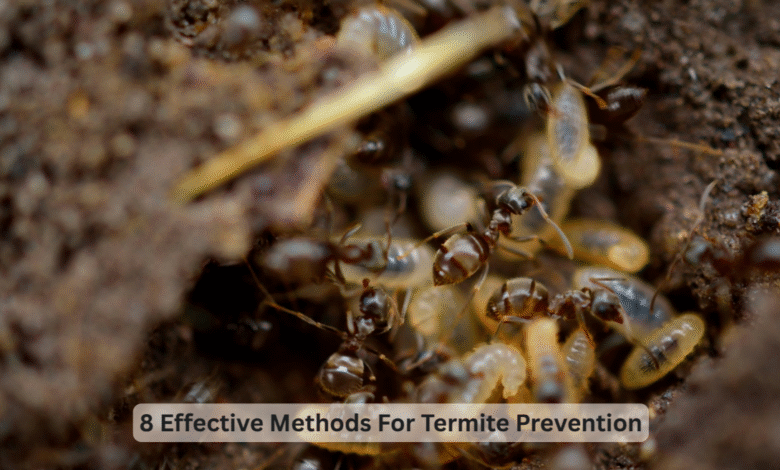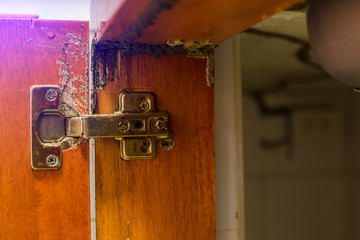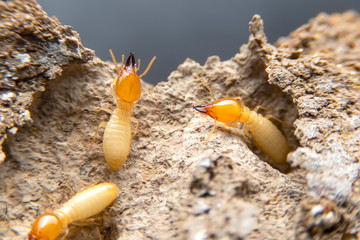8 Effective Methods For Termite Prevention

Some hazards slip in quietly — until the harm is done.
Wooden floorboards begin to sag.
The walls sound hollow, tapping back at you.
The signs appear late, but the damage starts long before. It’s a lesson that most homeowners don’t fully grasp until they’ve shelled out thousands to cover repairs.
Termites are known as the silent destroyers. They don’t crash through your walls and start rummaging through the attic. But instead, they gnaw — slowly, steadily — until what once was solid is left fragile.
This is where effective termite prevention is key. It’s not a one-time fix but a series of habits and strategies designed to keep your property safe in the long haul.
Here are the top termite prevention methods that every homeowner should be aware of.
1. Work With Experts Early On
Although home remedies might alleviate the problem for a while, an expert knows where and how termites act or hide. This is why it’s integral to schedule annual or bi-annual inspections from reputable companies, such as Extermin8 Termite & Pest Control. These professionals can identify early warning signs that the untrained eye would miss, apply targeted treatments, and work with you to establish an effective prevention plan — customized to your specific property.

Then, the sooner you engage professional help, the better chance you have of halting a colony before it has been established.
2. Keep Moisture in Check
If your home has poor drainage areas, leaks, or overwatering at or near the foundation, you are essentially inviting trouble. Termites are also attracted to moisture, and damp crawl spaces can quickly become infested with these wing-eating pests.
Repair leaky faucets, clear gutters, and establish adequate drainage to steer water away from your house. A solid foundation is frequently your best and first line of defense.
3. Seal Entry Points
Due to their size, termites are capable of gaining access to structures through holes that are 1/32 of an inch. That doesn’t seem like much, but your house probably has hundreds of such openings — alongside walls and foundations, along utility lines and around vents. Eventually, these become freeways for termites and pests.
Check your foundation and walls for cracks regularly. Fill any gaps with a concrete patch or caulk. Ensure that you focus on areas in the home where plumbing or electrical lines enter the building.
4. Declutter and Clear Wood Debris
Termites eat cellulose, which is abundant in wood. That includes tree stumps, dead roots, firewood, and even cardboard boxes kept in crawl spaces. By allowing wood debris to accumulate around your property, you are providing termites with a food source too close for comfort.
Take out old lumber, cut off tree stumps, and don’t store firewood up next to the foundation. Store any wood you must keep off the ground and covered.
5. Use Termite-Resistant Materials

Prevention, too, starts during construction and renovation. There’s not much we can do but use termite-resistant materials to minimize potential harm. Although there is no such thing as a termite-proof material, pressure-treated wood, metal, concrete, and select composites offer some amount of resistance.
If you are remodeling, building a deck or replacing siding, use materials that insects won’t damage. They provide an added shield of protection.
6. Install Physical Barriers During Construction
Physical termite barriers can be highly successful in new buildings or major renovations. These include stainless steel wire mesh, crushed rock, and finely screened material barriers, as well as sand-fine acrylic or sand-particle layers in the foundation.
When properly installed during the building process, these barriers create an obstacle that is so substantial that it is hard, if not impossible, for termites to reach the wood. They’re something you’ll need to plan and budget for and be prepared to shell out extra cash for the time being. However, over time, that money could ultimately save you on future repairs.
7. Don’t Ignore the Crawl Space
Dirt-floored or inadequately ventilated crawl spaces are some of the best places for termites to breed. They are subject to swift accumulation of moisture, and wood construction is typically visible.
Enshroud the crawl space, install a vapor barrier, or add ventilation, and you will notice a significant difference. Drying out and cleaning this area deprives termites of their nesting and feeding habitat.
8. Monitor Mulch and Landscaping Practices
Mulch can help retain moisture in your soil and looks nice, but moisture is often the enemy of a home, as it attracts termites that love the cellulose they find in it.
Do not let single-family homeowners use mulch within 15 inches of the base of your home. Do not apply wood-based mulch directly against siding when possible; instead, opt for stone, rubber, or treated mulch alternatives. Additionally, when you trim back any bushes or plants that touch the exterior of your house, it makes the little termite access pathways less visible.
Final Thoughts
Preventing termites is not a one-word answer; it’s layers of protection. From moisture regulation and material selection to regular inspections by professionals and awareness of your landscaping, every measure you take plays a part in preserving your property.

Most of all, prevention is more cost-effective than a cure. Termites do not announce in advance the destruction they plan to cause. When you see them, they’re already established. Whether you are a homeowner or a commercial building superintendent, spending money on these preventive measures is a key way to protect your investment for the future.
By remaining ever-vigilant in your efforts and relying on seasoned experts, you can rest assured you are doing more than simply preventing termites – you’re safeguarding the value, structure, and safety of your home well into the future.



